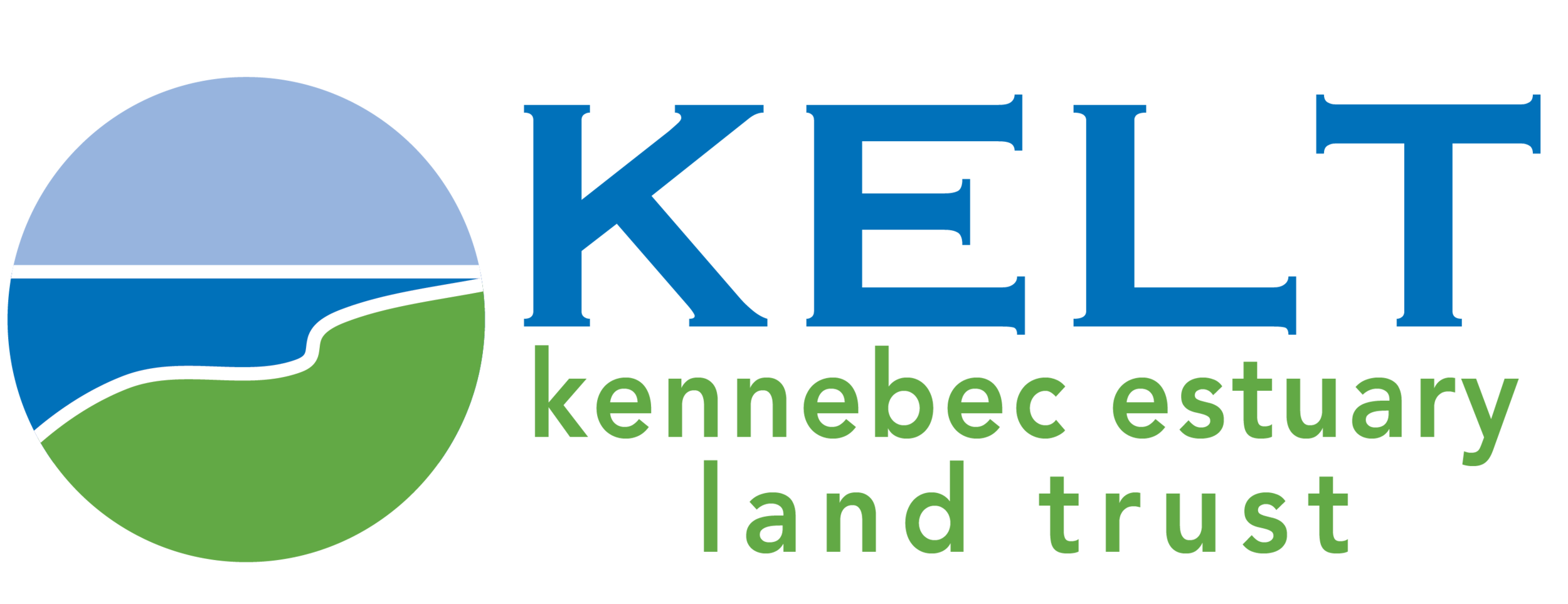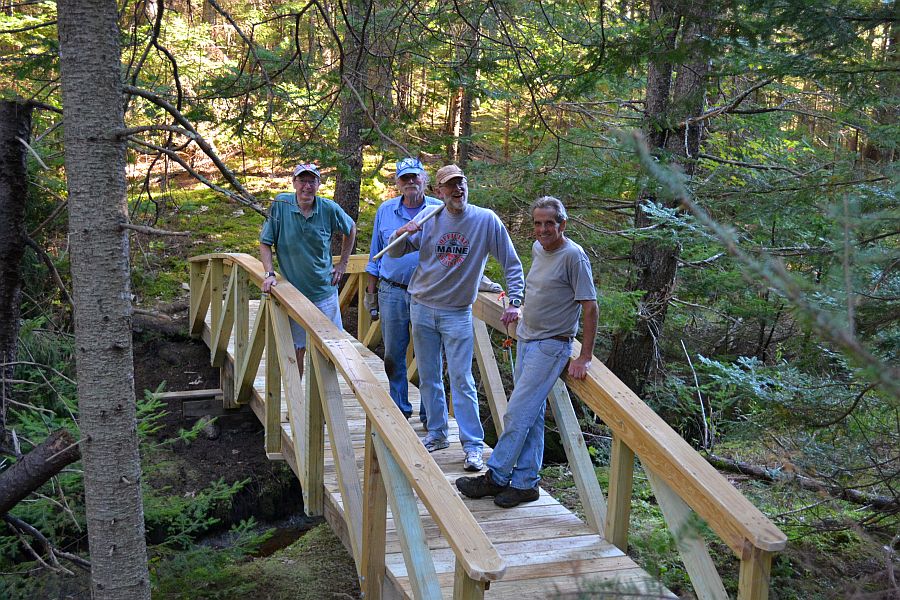Bonyun Preserve
Thomas Point. Photo by Archie Bonyun
Bonyun Preserve is conservation land managed primarily for the preservation of wildlife. The Preserve is open free of charge to the public from dawn to dusk. Help us protect what you have come to enjoy. Natural areas are delicate.
Foot traffic only, no camping, fires, bicycles, or motorized vehicles. Please respect boundary signs and enjoy your visit.
The Donors
Bill and Gene Bonyun were beloved folklorists who pioneered the concept of folk songs as living history, and sang folk and maritime songs in the classrooms and concert halls of America. Bill and Gene generously protected this land in its natural state for future generations to enjoy.
Ecology of the Preserve
As you walk the trails look for six natural areas that support a variety of flora and fauna.
1. Tidal Inlet – Mill Cove’s salt marsh supports wading birds such as snowy egret and great blue heron, as well as migrating shorebirds. Low tide mud flats offer abundant crustacean and marine worm habitat. Fish fry shelter in the shallow waters.
2. Mixed Old-growth Woods – Great white pine, oak and hemlock are habitat for woodpeckers and songbirds. Two osprey nests are located on Thomas Cove shore. White-tailed deer, fox, raccoon, and mink use these forests for food and shelter.
3. Fresh Water Marshes – Wetlands nurture amphibians and birds. Mosses and ferns take root on the banks.
4. Sasanoa River Estuary – Part of the Kennebec-Androscoggin watershed draining one-third of the state, the estuary is a nationally-recognized habitat for birds and fish. This section of the east coast flyway is essential for the survival of migrating birds. Over 40 species of fish use these waters including striped bass, Morone saxatilis.
5. Riparian Areas – Land adjacent to waterways is used by 85% of Maine’s vertebrates. Amphibians find food and shelter along the small streams that drain into Mill Cove.
6. Pocket Wetlands – Salt marsh uplands provided early settlers with hay, Spartina patens. Populated by salt-tolerant species, marshlands are the most productive ecosystems in the world.
Land Use History
6000 years ago to 1700 - Abenaki tribes inhabited seasonal camps in the rich fishing and clamming grounds of the Kennebec estuary.
1607-1676 - European settlements, established for fishing, lumber and fur trade, expand along the rivers and on islands like “Jeremysquam”- now Westport Island.
1735 - Timothy Dunton, first permanant Westport Island settler, arrives.
1810 - Main Road (Rt. 144) laid out to connect five island mills.
1850 - Lower Heal Mill at peak production, only the dam and pilings remain today. A new interpretive sign has been added to the Bonyun Preserve Mill Cove trail showing what the historic Lower Heal Mill looked like when in operation in 1850. The Kennebec Estuary Land Trust’s Management Plan for the Bonyun Preserve calls for preserving this historic site as it remains today.
Tidal mills were a familiar site on Westport Island in the 1800’s. Looking across Mill Cove from the trail you can see the remains of Heal’s Lower Mill, which was used to saw logs into boards and to grind corn into meal (grist). This mill was built in 1830 by James and Moses Riggs and later operated by the Heal family. Production at the mill wound down by 1895 and most buildings disappeared by 1950.
1860 - Seamen and fishermen outnumber farmers 3 to 1.
1880 - Forty sailing vessels lie in Westport Island coves. Riggs Mill is operating on the southwest portion of the Island.
1941 - Eugenia and William L. Bonyun buy 120 acres from the Thomas family. The Thomas family, and their ancestors before them, farmed on Thomas Point since the island was first settled. The Bonyun family began truck farming, and raised three sons on the property.
1989 - Bonyun land is placed under conservation easement to Maine Department of Inland Fisheries and Wildlife.
2002 - Heirs donate Bonyun Preserve to the Land Trust.
Geology of the Preserve
Westport Island is underlain by granite bedrock, covered for the most part with thin, relatively poor acidic soils.
The general landscape was shaped by events that occurred during the pleistocene epoch, which began about 2 million years ago. There were at least four periods of glaciation during which huge ice sheets covered all of Lincoln County.
The last major glaciation spread southeast about 18,000 years ago. As it moved, the glacier ground up rocks beneath it and deposited this newly eroded material as a compact layer of glacial till. The sheer weight of the ice sheet depressed the land surface, while the large quantity of water tied up in the ice lowered the surface of the sea by as much as 350 feet.
As the ice melted the land began to rebound and emerge from the sea. This emergence lasted from about 13,000 to 10,000 years ago when sea level was 180 feet below the present level. Since that time, a slow submergence of the land has brought the sea up to its present level.
- Driving Directions -
From Route 1, take Route 144 south 10 miles to second intersection with West Shore Road (Lower). Turn Right, go 0.25 miles to parking lot and kiosk on left. Marked trails. View Map.
Share what you see at Bonyun!
Use iNaturalist to document the plants and animals you see while wandering through Bonyun’s trails. The observations you make will appear below, use the tool to check out what people have already recorded!







